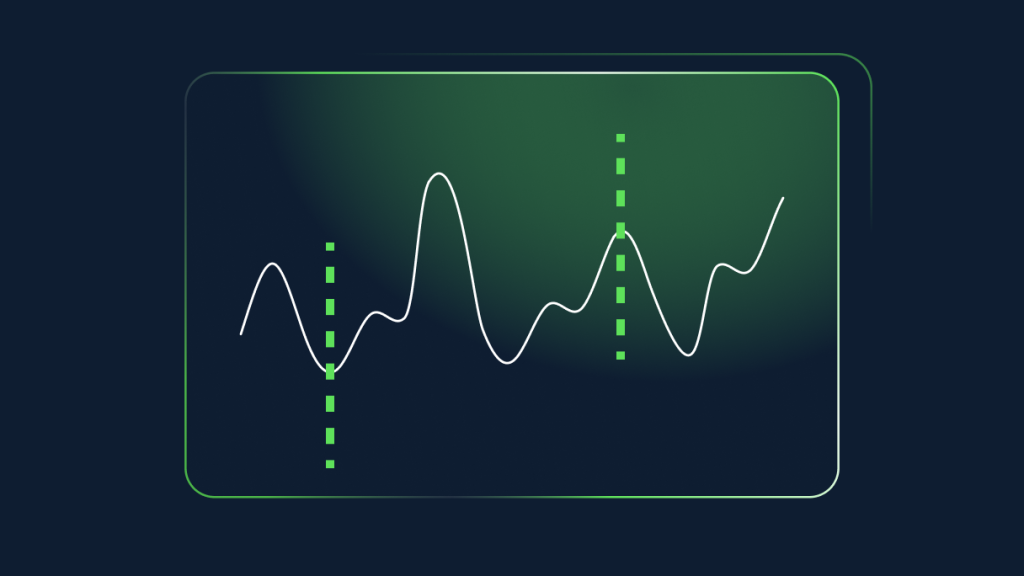Moving averages are one of the most versatile and widely used tools in forex trading. They help traders identify trends, forecast potential reversals, and smooth out market noise. In this comprehensive guide, we’ll explore how to trade forex using moving averages effectively, including their types, applications, and strategies. Whether you’re a beginner or an experienced trader, mastering moving averages can enhance your decision-making process and improve your trading outcomes.
Want to elevate your forex trading knowledge and skills? Join EPIQ Trading Floor today! Start your risk-free 3-day trial and enjoy exclusive resources like trade signals, Member’s only livestreams, and one-on-one coaching. Use code “BLOG” at checkout for 10% off your membership. Cancel anytime within the trial period without being charged.
What Are Moving Averages?
A moving average (MA) is a technical indicator that calculates the average price of a currency pair over a specific period. By smoothing out price data, MAs make it easier to identify trends and potential trading opportunities. Moving averages are lagging indicators, meaning they rely on historical price data, which can be both an advantage and a limitation.
There are two main types of moving averages commonly used in forex trading:
- Simple Moving Average (SMA):
The SMA is calculated by taking the average closing price of a currency pair over a specific time period. For example, a 10-day SMA adds the closing prices for the past 10 days and divides the sum by 10. - Exponential Moving Average (EMA):
The EMA gives more weight to recent prices, making it more responsive to price changes. Traders often prefer EMAs for short-term trading strategies.

Why Use Moving Averages in Forex Trading?
Moving averages are invaluable tools for several reasons:
- Identifying Trends: Moving averages help traders distinguish between uptrends, downtrends, and sideways markets.
- Support and Resistance: MAs can act as dynamic support or resistance levels.
- Trend Confirmation: They confirm the strength and direction of a trend when combined with other indicators.
- Signal Generation: Crossovers of different moving averages or the price crossing an MA can provide entry and exit signals.
According to Investopedia, traders often use moving averages to minimize the impact of random price fluctuations and focus on underlying trends.
Popular Moving Average Strategies
1. The Moving Average Crossover Strategy
In this strategy, traders use two moving averages: one short-term and one long-term. A buy signal is generated when the short-term MA crosses above the long-term MA (golden cross), while a sell signal occurs when the short-term MA crosses below the long-term MA (death cross).
Example: Use a 50-day EMA and a 200-day EMA. When the 50-day EMA crosses above the 200-day EMA, it signals a bullish trend.
2. Moving Averages as Dynamic Support and Resistance
Moving averages often act as support or resistance levels during trending markets. For instance, during an uptrend, prices may retrace to the moving average before resuming the upward movement.
3. Combining Moving Averages with Other Indicators
Moving averages work well with other indicators like the Relative Strength Index (RSI) or Bollinger Bands. For example, a moving average crossover confirmed by an RSI reading above 70 (overbought) or below 30 (oversold) can improve trade accuracy.
Timeframes and Moving Averages
The effectiveness of moving averages depends on the chosen timeframe and the type of trading strategy.
- Short-Term Trading: Use smaller MAs (e.g., 10-day or 20-day EMAs) for quick price movements.
- Long-Term Trading: Use larger MAs (e.g., 50-day or 200-day SMAs) to identify broader market trends.
Traders often customize timeframes to suit their trading style and goals.

Pros and Cons of Using Moving Averages
Advantages
- Easy to use and interpret.
- Helps identify trends and trading opportunities.
- Can be applied to any forex pair or timeframe.
Disadvantages
- Lags behind real-time price movements.
- May generate false signals in choppy or ranging markets.
Practical Tips for Trading with Moving Averages
- Combine Moving Averages with Fundamental Analysis: While MAs focus on price action, integrating them with fundamental factors like interest rate decisions or economic data can improve decision-making.
- Set Stop-Loss Orders: Use stop-loss levels below support or above resistance to manage risk.
- Backtest Your Strategy: Test your moving average strategies using historical data to refine your approach.
According to FXStreet, traders who combine technical tools with disciplined risk management tend to achieve better outcomes over the long term.

Enhance Your Trading with EPIQ Trading Floor
Mastering moving averages is just one part of becoming a successful forex trader. At EPIQ Trading Floor, we offer comprehensive resources to take your trading to the next level:
- Real-Time Trade Signals: Make informed decisions with accurate trade alerts.
- Member’s Only Livestreams: Learn from experienced traders in live sessions.
- One-on-One Coaching: Tailored guidance to refine your strategies.
- Exclusive Mobile App: Access powerful trading tools anytime, anywhere.
Start your risk-free 3-day trial today and use code “BLOG” at checkout for 10% off. Cancel anytime within the trial period without being charged. Don’t miss the chance to become a smarter, more confident trader.
Conclusion
Trading forex with moving averages can be a game-changer when used correctly. These tools simplify market analysis, improve decision-making, and help traders stay disciplined. Whether you’re a day trader or a long-term investor, integrating moving averages into your trading plan can yield significant benefits.
Take the next step in your trading journey with EPIQ Trading Floor. With expert guidance, exclusive resources, and actionable trade insights, you’ll be equipped to navigate the forex market confidently.
Disclaimer: The content provided in this article is for educational purposes only and does not constitute financial advice. Trading forex involves substantial risk, and you should consult a financial advisor before making investment decisions.










Responses